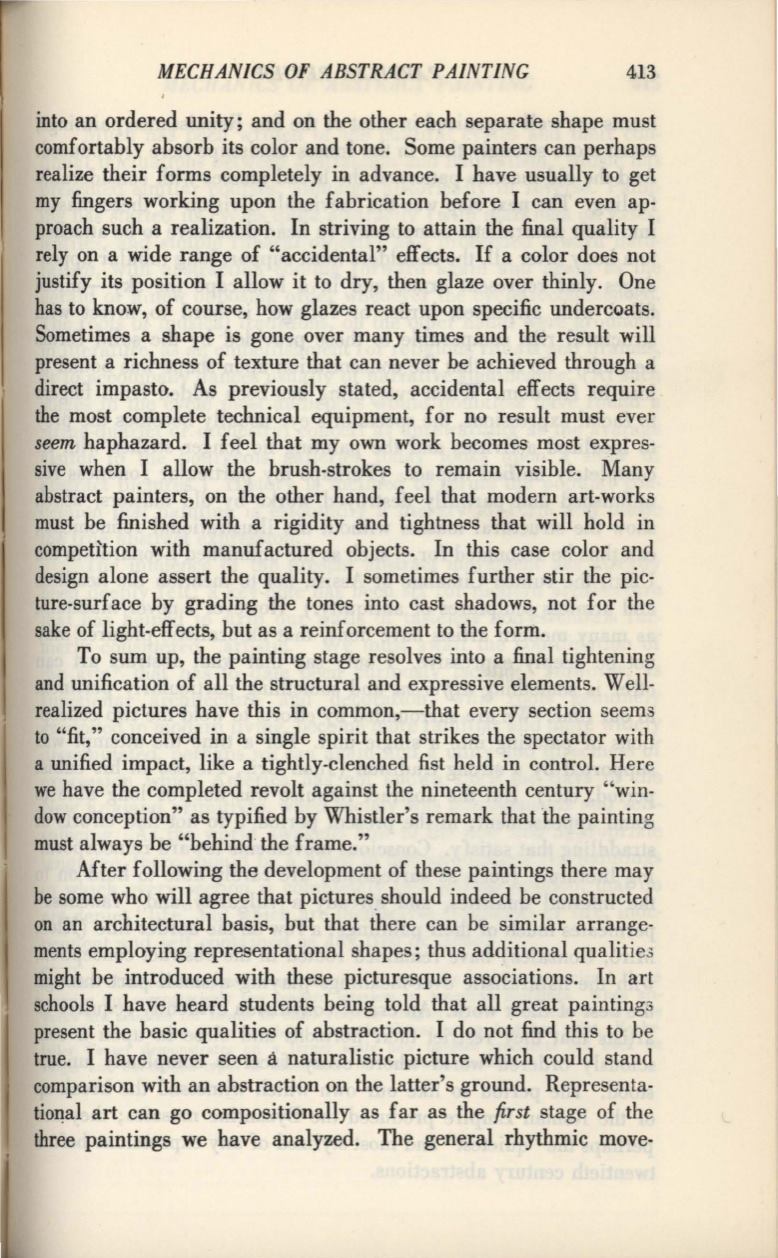
MECHANICS OF ABSTRACT PAINTING
413
into an ordered unity; and on the other each separate shape must
comfortably absorb its color and tone. Some painters can perhaps
realize their forms completely in advance. I have usually to get
my fingers working upon the fabrication before I can even ap–
proach such a realization. In striving to attain the final quality I
rely on a wide range of "accidental" effects.
If
a color does not
justify its position I allow it to dry, then glaze over thinly. One
has to know, of course, how glazes react upon specific undercoats.
Sometimes a shape is gone over many times and the result will
present a richness of texture that can never be achieved through a
direct impasto. As previously stated, accidental effects require
the most complete technical equipment, for no result must ever
seem
haphazard. I feel that my own work becomes most expres–
sive when I allow the brush-strokes to remain visible. Many
abstract painters, on the other hand, feel that modern art-works
must be finished with a rigidity and tightness that will hold in
competition with manufactured objects. In this case color and
design alone assert the quality. I sometimes further stir the pic–
ture-surface by grading the tones into cast shadows, not for the
sake of light-effects, but as a reinforcement to the form.
To sum up, the painting stage resolves into a final tightening
and unification of all the structural and expressive elements. Well–
realized pictures have this in common,-that every section seems
to "fit," conceived in a single spirit that strikes the spectator with
a unified impact, like a tightly-clenched fist held in controL Here
we have the completed revolt against the nineteenth century "win–
dow conception" as typified by Whistler's remark that the painting
must always be "behind the frame."
Mter following the development of these paintings there may
be some who will agree that pictures.should indeed be constructed
on an architectural basis, but that there can be similar arrange–
ments employing representational shapes; thus additional qualitie3
might be introduced with these picturesque associations. In art
schools I have heard students being told that all great painting3
present the basic qualities of abstraction. I do not find this to be
true. I have never seen
a
naturalistic picture which could stand
comparison with an abstraction on the latter's ground. Representa–
tioqal art can go compositionally as far as the
first
stage of the
three paintings we have analyzed. The general rhythmic move-


